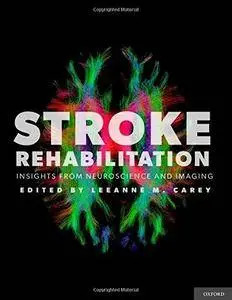Stroke Rehabilitation: Insights from Neuroscience and Imaging By Leeanne M. Carey
2012 | 280 Pages | ISBN: 0199797889 | PDF | 6 MB
2012 | 280 Pages | ISBN: 0199797889 | PDF | 6 MB
Stroke Rehabilitation: Insights from Neuroscience and Imaging informs and challenges neurologists, rehabilitation therapists, imagers, and stroke specialists to adopt more restorative and scientific approaches to stroke rehabilitation based on new evidence from neuroscience and neuroimaging literatures. The fields of cognitive neuroscience and neuroimaging are advancing rapidly and providing new insights into human behavior and learning. Similarly, improved knowledge of how the brain processes information after injury and recovers over time is providing new perspectives on what can be achieved through rehabilitation. Stroke Rehabilitation explores the potential to shape and maximize neural plastic changes in the brain after stroke from a multimodal perspective. Active skill based learning is identified as a central element of a restorative approach to rehabilitation. The evidence behind core learning principles as well as specific learning strategies that have been applied to retrain lost functions of movement, sensation, cognition and language are also discussed. Current interventions are evaluated relative to this knowledge base and examples are given of how active learning principles have been successfully applied in specific interventions. The benefits and evidence behind enriched environments is reviewed with examples of potential application in stroke rehabilitation. The capacity of adjunctive therapies, such as transcranial magnetic stimulation, to modulate receptivity of the damaged brain to benefit from behavioral interventions is also discussed in the context of this multimodal approach. Focusing on new insights from neuroscience and imaging, the book explores the potential to tailor interventions to the individual based on viable brain networks.



